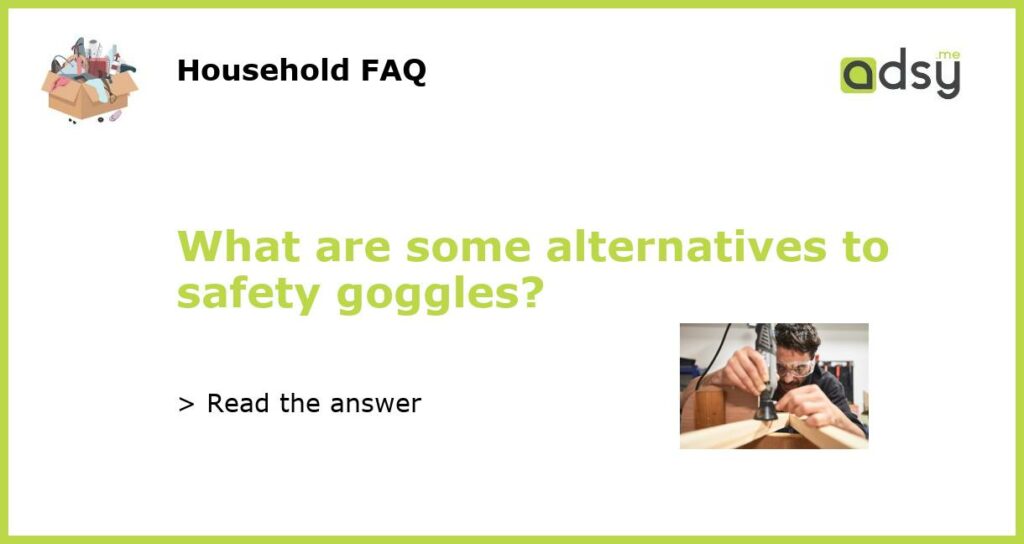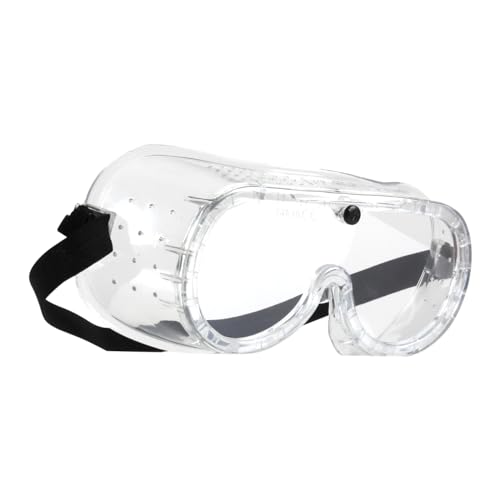Safety Glasses
If you’re looking for an alternative to safety goggles, one popular choice is safety glasses. Safety glasses are similar to regular eyeglasses or sunglasses but are specifically designed to protect the eyes from potential hazards in the workplace or while engaging in certain activities. They typically have a wraparound design for increased coverage and may also feature side shields for additional protection.
Safety glasses are available in a variety of styles and lens options, including clear lenses for general eye protection, tinted lenses for glare reduction, and polarized lenses for enhanced visual clarity. Some safety glasses even have anti-fog coatings to prevent the lenses from steaming up during use.
It’s important to note that not all safety glasses are created equal, and it’s crucial to choose a pair that meets the necessary safety standards for your specific task or industry. Look for safety glasses that are compliant with the appropriate protective eyewear standards, such as ANSI Z87.1 in the United States, to ensure optimal eye protection.
Face Shields
Another alternative to safety goggles is a face shield. Face shields are large, clear visors that cover the entire face, providing protection not only for the eyes but also for the entire face and in some cases, the neck. They are typically made of tough and durable materials, such as polycarbonate, to withstand impact from flying debris or projectiles.
Face shields are commonly used in industries where there is a higher risk of splashes, sprays, or projectiles, such as in healthcare settings, construction sites, or manufacturing facilities. They offer a wider field of vision compared to safety goggles, allowing for better visibility and ease of movement.
When choosing a face shield, ensure that it provides adequate coverage and fits securely on the head. Adjustable headbands or straps can help achieve a proper fit. Additionally, look for face shields that are designed to be worn in conjunction with other personal protective equipment (PPE), such as a hard hat or respirator, if needed.
Welding Helmets
If you work in an industry that involves welding or other types of high-intensity arc or flame applications, welding helmets can be an excellent alternative to safety goggles. Welding helmets are specifically designed to protect the eyes and face from the intense light, heat, and infrared and ultraviolet radiation produced during welding or cutting processes.
Welding helmets typically feature a durable shell to protect the head and face, a darkened lens (usually a shade 10 or higher) that filters out harmful radiation, and a protective cover plate on the outside of the lens to prevent scratches or damage. Some welding helmets also have adjustable headbands or suspension systems for a comfortable fit.
It’s crucial to choose a welding helmet that meets the necessary safety standards for welding operations, such as ANSI Z87.1 and ANSI Z49.1 in the United States. Additionally, consider the specific welding process or application you’ll be engaging in to determine the appropriate lens shade or filter needed for optimal eye protection.
Full-Face Respirators
In certain industries or work environments where there is a risk of airborne contaminants or gases, full-face respirators can offer comprehensive eye and respiratory protection, making them a suitable alternative to safety goggles. Full-face respirators consist of a mask that covers the entire face, including the eyes, nose, and mouth, and have built-in filters or cartridges to remove harmful substances from the air.
These respirators provide a tight seal around the face to prevent the entry of airborne hazards and often come with adjustable straps or headbands for a secure fit. They may also have anti-fogging properties to ensure clear vision during use.
When selecting a full-face respirator, it’s essential to consider the specific hazards present in your work environment and choose a respirator that offers adequate protection against those substances. Consult the respirator’s manufacturer guidelines or seek guidance from a safety professional to ensure proper selection, use, and maintenance of the respirator.
Safety Visors
Lastly, safety visors can be an alternative option to safety goggles. Safety visors are typically made of a clear, impact-resistant material, such as polycarbonate, and provide protection for the eyes and face against hazards like flying debris, chemicals, or splashes.
Safety visors are commonly used in various industries, such as construction, woodworking, and manufacturing, as well as in certain sports or recreational activities. They are often worn in combination with other protective equipment, such as hard hats, to ensure comprehensive head and face protection.
When choosing a safety visor, ensure that it provides adequate coverage, fits securely on the head, and is compliant with the necessary safety standards for your specific industry or task. Regularly inspect the visor for any signs of wear or damage and replace it as needed to maintain optimal protection.






